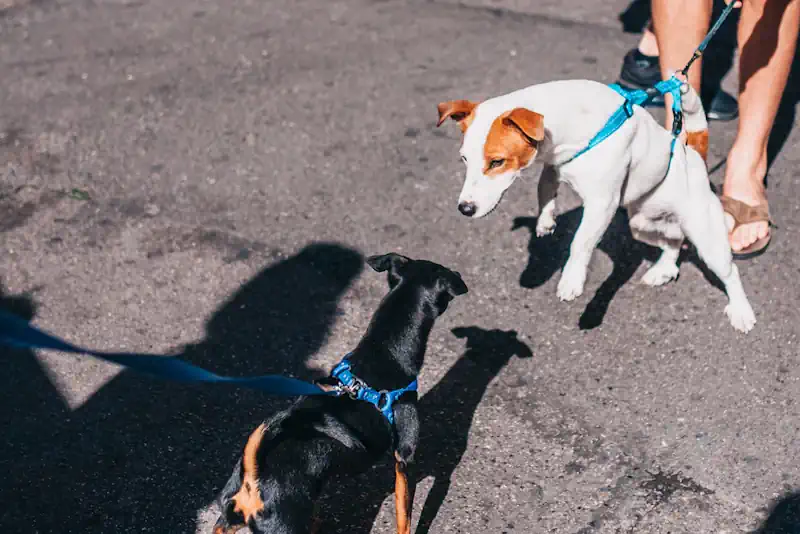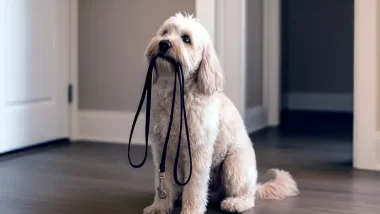The sound of snarling and barking erupted from the backyard like a thunderclap. My son’s two mastiffs, Suede and Yankee, had been lounging peacefully in a shaded corner of the yard, hidden from the neighbor’s view. The neighbor, thinking the coast was clear, had let his own large dogs out into his adjacent yard. In an instant, both sets of dogs rushed toward the chain-link fence that separated their territories.

What started as fence-line aggression quickly escalated into something far more serious. Suede, the more aggressive of the two mastiffs, launched herself over the four-foot fence with surprising agility for such a massive dog. The fight that followed was brutal and chaotic, a tangle of powerful bodies and flashing teeth.
A Fight Turns Deadly
My son’s neighbor panicked. Instead of reaching for the garden hose, he ran directly past it. Instead of trying any of the safer intervention methods available to him, he grabbed a butcher knife from his kitchen. In his fear and desperation, he stabbed Suede multiple times, piercing her lung and damaging her internal organs. The wounded dog managed to leap back over the fence but collapsed immediately in my son’s yard.
By the time my son heard the commotion and rushed outside, Suede was bleeding heavily and struggling to breathe. Yankee, her gentle companion, stood nearby in obvious distress, sensing something was terribly wrong. The frantic drive to the emergency veterinary clinic felt endless, but it was already too late. The damage was too severe, and Suede had to be euthanized that same day.
(Yankee’s photo now graces the top of our Facebook page. (Did you see it?) His playful, upside-down grin in the photo captures his joyful spirit perfectly, serving as a reminder of the happiness these gentle giants can bring.)
Later that evening, the neighbor called with words that still echo painfully: “There wasn’t anything else I could do!” But there was. There were garden hoses, loud noises, a rake in the backyard – so many options that didn’t involve lethal force. When my son contacted the police, they explained that because his dog had entered the neighbor’s property, no charges could be filed, though they privately agreed the neighbor’s response was excessive.
This tragedy could have been prevented – not just through better communication between neighbors, but through knowledge of safe and effective intervention techniques. Suede’s death serves as a stark reminder that in moments of crisis, panic can lead to irreversible decisions.
Understanding Dog Fights
Witnessing a dog fight can be a harrowing experience, especially if one of the dogs involved is your own. Whether it’s at a local dog park or a neighbor’s yard, seeing two dogs aggressively engage can leave any pet owner feeling helpless and anxious. However, it’s crucial to approach the situation with caution and to prioritize your own safety before attempting to intervene.

Dog fights can escalate quickly, often stemming from play that becomes too rough or disputes over toys, treats, or territory. Fence-line aggression, like what led to Suede’s death, is particularly common and can create ongoing tension between neighboring dogs. It’s important to recognize that dogs in this heightened state are driven by instinct and may not respond to familiar commands or gestures. Therefore, it’s advised not to physically intervene unless you’re confident you can do so safely.
Most importantly, remember that dogs rarely fight to the death. While fights can look and sound terrifying, they often end naturally when one dog submits or backs down. This knowledge can help prevent panic-driven decisions that escalate rather than resolve the situation.
Safe Intervention Techniques
Before attempting to break up a dog fight, assess the situation. Many disputes are short-lived, with one dog backing down after an initial show of dominance. However, if the fight persists and there’s a risk of injury, it’s time to step in. Here are some methods that can be effective:
- Create a Loud Distraction: Clapping, banging objects, or using an air horn can sometimes startle the dogs enough to break their focus and stop the fight. Even shouting loudly or blowing a whistle can be effective.
- Use Water: If water is accessible, spraying the dogs in the face can interrupt the fight. This can be done with a hose (like the one Suede’s neighbor ignored), a spray bottle, or by throwing water from a bowl. The sudden shock often breaks the dogs’ concentration.
- Throw a Barrier: Placing an object, like a blanket, jacket, or broom, between the dogs can momentarily separate them. Be cautious not to put your hands near their mouths. A large piece of cardboard or even a trash can lid can serve as an effective barrier.
- Citronella Spray: A non-harmful option that can distract dogs is citronella spray, which has a strong scent that may halt the fight. Many dog owners keep this on hand specifically for emergencies.
- Lift the Dogs’ Rear Ends: With two people, lifting the dogs by their hind legs (wheelbarrow method) can prevent them from continuing the fight. Once separated, they can be safely set down away from each other.
- Remove the Audience: Sometimes dogs fight harder when they feel they have an audience. Removing other dogs, people, or distractions from the area can help de-escalate the situation.
Never grab dogs by their collars, put your hands near their heads, or use weapons or objects that could cause serious injury. The goal is separation, not harm.

Post-Fight Care
After successfully separating the dogs, it’s important to check them for injuries but do so carefully. Dogs may still be agitated and could redirect their aggression toward you, even if you’re their owner. Allow them to calm down in separate areas before conducting a thorough examination.
Even minor wounds can become infected, and some injuries, like soft tissue damage or internal trauma, may not be immediately visible. A veterinary examination is recommended to ensure there are no internal injuries or underlying issues. Puncture wounds, in particular, can be deceptive. They can appear small on the surface while causing significant damage internally.
Document any injuries with photos for potential insurance claims or legal purposes, especially if the fight occurred on someone else’s property or involved multiple dog owners.
Preventing Dog Fights
The most effective way to deal with dog fights is to prevent them from happening in the first place. This involves being attentive to your dog’s interactions with others and recognizing signs of aggression or discomfort.
For neighbors with dogs, communication is key. Establish clear schedules for yard time, maintain proper fencing, and address fence-line aggression before it escalates. Consider installing privacy barriers or moving activities away from shared fence lines.
Not all dogs are suited for off-leash play or group settings, and understanding your dog’s temperament and limits is key to preventing conflicts. Some dogs, like Suede, may be naturally more assertive and require extra management in multi-dog situations.

The Emotional Aftermath
Beyond the physical injuries, dog fights can leave lasting emotional scars on both the animals and their owners. The trauma of witnessing violence between dogs, especially when it results in serious injury or death, can affect entire families and communities. It’s important to acknowledge these feelings and seek support when needed.
If you’re involved in a dogfight situation, remember that accidents happen, but how we respond in those critical moments can make the difference between a scary experience and a tragedy. Education, preparation, and level-headed thinking are our best tools for protecting the dogs we love.
By staying vigilant and employing safe intervention techniques, you can help ensure the well-being of all dogs involved in a fight. Remember, the goal is to protect both the dogs and yourself from harm, and sometimes the best course of action is to prevent the situation from escalating in the first place.
This article is intended for informational purposes and should not replace professional veterinary advice. If you’re dealing with the aftermath of a serious dog fight, consult with both veterinary and legal professionals as needed.

